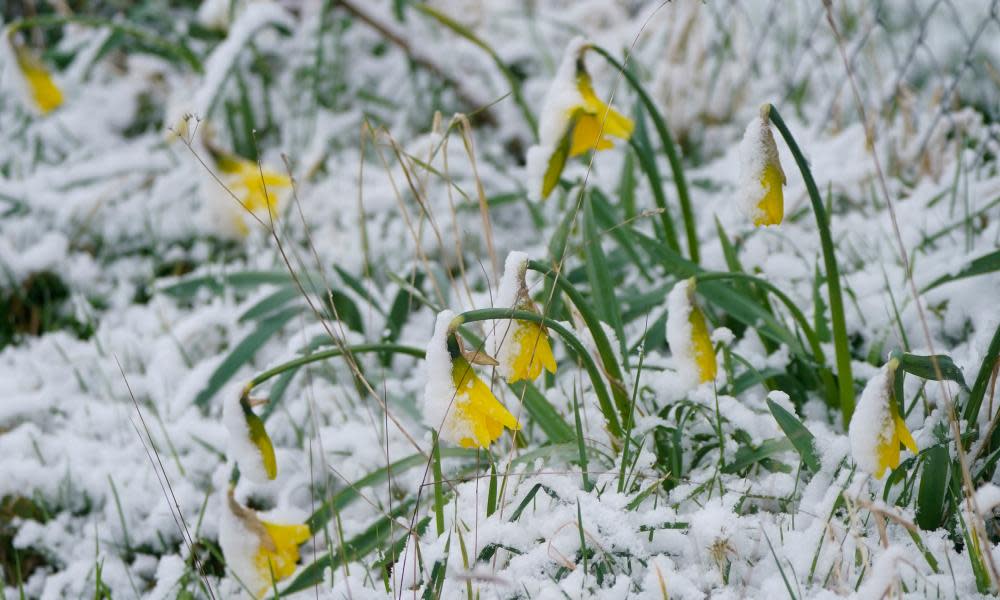Spring has sprung in the UK but don’t be surprised by more wintry weather

Astronomers mark the start of spring as the vernal equinox, which fell on 20 March this year. But an extra dollop of wintry weather may arrive long after spring has supposedly sprung.
On the night of 22-23 March 2013, Britain experienced its severest snowfall for years. Up to 41cm was recorded by the Met Office in the north of England, with drifts of more than 2 metres reported in places.
April is snowier than you might think. According to the Met Office, the UK averages 2.3 snowy days in April, compared with 1.7 in November. While much of this is concentrated in the Highlands of Scotland, April snow can reach further south. On 26 April 1981 heavy snowfall covered much of England and Wales. Okehampton, in Devon, recorded 25cm of snow, and blizzard conditions disrupted electricity supplies, roads and railways.
Snow can appear later in spring and right into summer, though usually more as a short-lived curiosity than anything more serious. When conditions are warmer, it is sometimes unclear whether snow has actually fallen or if it is light hail. Sometimes, though, there is no doubt. On 2 June 1975, a cricket match between Derbyshire and Lancashire at Buxton was called off after an 2.5cm of snow settled on the outfield.

 Yahoo News
Yahoo News 
